PDK2-mediated alternative splicing switches Bnip3 from cell death to cell survival
- PMID: 26416963
- PMCID: PMC4586742
- DOI: 10.1083/jcb.201504047
PDK2-mediated alternative splicing switches Bnip3 from cell death to cell survival
Abstract
Herein we describe a novel survival pathway that operationally links alternative pre-mRNA splicing of the hypoxia-inducible death protein Bcl-2 19-kD interacting protein 3 (Bnip3) to the unique glycolytic phenotype in cancer cells. While a full-length Bnip3 protein (Bnip3FL) encoded by exons 1-6 was expressed as an isoform in normal cells and promoted cell death, a truncated spliced variant of Bnip3 mRNA deleted for exon 3 (Bnip3Δex3) was preferentially expressed in several human adenocarcinomas and promoted survival. Reciprocal inhibition of the Bnip3Δex3/Bnip3FL isoform ratio by inhibiting pyruvate dehydrogenase kinase isoform 2 (PDK2) in Panc-1 cells rapidly induced mitochondrial perturbations and cell death. The findings of the present study reveal a novel survival pathway that functionally couples the unique glycolytic phenotype in cancer cells to hypoxia resistance via a PDK2-dependent mechanism that switches Bnip3 from cell death to survival. Discovery of the survival Bnip3Δex3 isoform may fundamentally explain how certain cells resist Bnip3 and avert death during hypoxia.
© 2015 Gang et al.
Figures
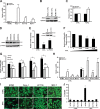
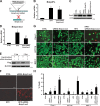
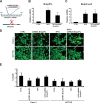
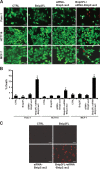
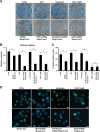
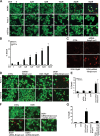
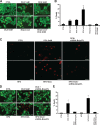
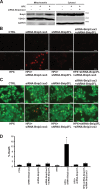
Similar articles
-
A novel hypoxia-inducible spliced variant of mitochondrial death gene Bnip3 promotes survival of ventricular myocytes.Circ Res. 2011 Apr 29;108(9):1084-92. doi: 10.1161/CIRCRESAHA.110.238709. Epub 2011 Mar 17. Circ Res. 2011. PMID: 21415393
-
Antagonism of E2F-1 regulated Bnip3 transcription by NF-kappaB is essential for basal cell survival.Proc Natl Acad Sci U S A. 2008 Dec 30;105(52):20734-9. doi: 10.1073/pnas.0807735105. Epub 2008 Dec 16. Proc Natl Acad Sci U S A. 2008. PMID: 19088195 Free PMC article.
-
Role of BNIP3 in proliferation and hypoxia-induced autophagy: implications for personalized cancer therapies.Ann N Y Acad Sci. 2010 Oct;1210:8-16. doi: 10.1111/j.1749-6632.2010.05778.x. Ann N Y Acad Sci. 2010. PMID: 20973794
-
A unique pathway of cardiac myocyte death caused by hypoxia-acidosis.J Exp Biol. 2004 Aug;207(Pt 18):3189-200. doi: 10.1242/jeb.01109. J Exp Biol. 2004. PMID: 15299040 Review.
-
[BNIP3 as an atypical representative of the Bcl-2 protein family. Part 2: Regulation of the expression and activity of BNIP3 protein and its role in tumorigenesis].Postepy Hig Med Dosw (Online). 2009 Sep 10;63:418-24. Postepy Hig Med Dosw (Online). 2009. PMID: 19745228 Review. Polish.
Cited by
-
Impaired NF-κB signalling underlies cyclophilin D-mediated mitochondrial permeability transition pore opening in doxorubicin cardiomyopathy.Cardiovasc Res. 2020 May 1;116(6):1161-1174. doi: 10.1093/cvr/cvz240. Cardiovasc Res. 2020. PMID: 31566215 Free PMC article.
-
The Nucleus/Mitochondria-Shuttling LncRNAs Function as New Epigenetic Regulators of Mitophagy in Cancer.Front Cell Dev Biol. 2021 Sep 8;9:699621. doi: 10.3389/fcell.2021.699621. eCollection 2021. Front Cell Dev Biol. 2021. PMID: 34568319 Free PMC article. Review.
-
Mitochondrial Metabolism in Carcinogenesis and Cancer Therapy.Cancers (Basel). 2021 Jul 1;13(13):3311. doi: 10.3390/cancers13133311. Cancers (Basel). 2021. PMID: 34282749 Free PMC article. Review.
-
Mitochondrial proteome research: the road ahead.Nat Rev Mol Cell Biol. 2024 Jan;25(1):65-82. doi: 10.1038/s41580-023-00650-7. Epub 2023 Sep 29. Nat Rev Mol Cell Biol. 2024. PMID: 37773518 Free PMC article. Review.
-
Proteasomal Degradation of TRAF2 Mediates Mitochondrial Dysfunction in Doxorubicin-Cardiomyopathy.Circulation. 2022 Sep 20;146(12):934-954. doi: 10.1161/CIRCULATIONAHA.121.058411. Epub 2022 Aug 19. Circulation. 2022. PMID: 35983756 Free PMC article.
References
-
- Bonnet S., Archer S.L., Allalunis-Turner J., Haromy A., Beaulieu C., Thompson R., Lee C.T., Lopaschuk G.D., Puttagunta L., Bonnet S., et al. . 2007. A mitochondria-K+ channel axis is suppressed in cancer and its normalization promotes apoptosis and inhibits cancer growth. Cancer Cell. 11:37–51. 10.1016/j.ccr.2006.10.020 - DOI - PubMed
-
- Chiche J., Rouleau M., Gounon P., Brahimi-Horn M.C., Pouysségur J., and Mazure N.M.. 2010. Hypoxic enlarged mitochondria protect cancer cells from apoptotic stimuli. J. Cell. Physiol. 222:648–657. - PubMed
Publication types
MeSH terms
Substances
Grants and funding
LinkOut - more resources
Full Text Sources
Other Literature Sources

